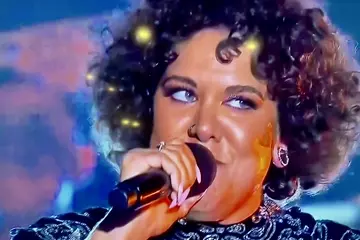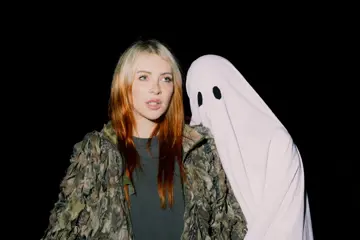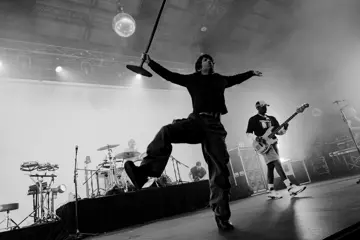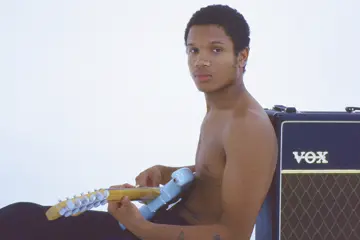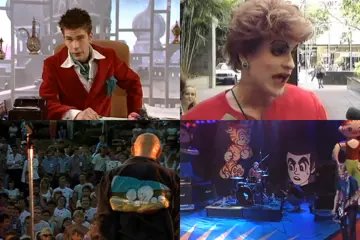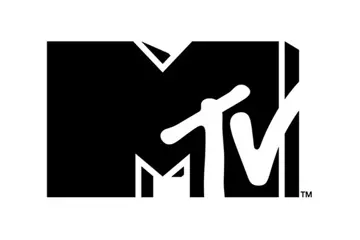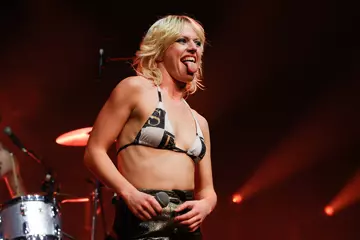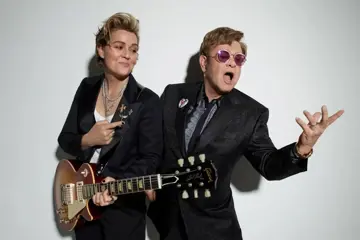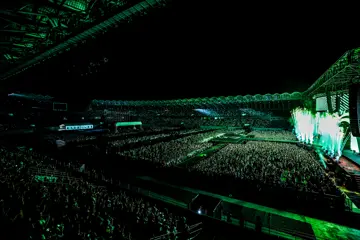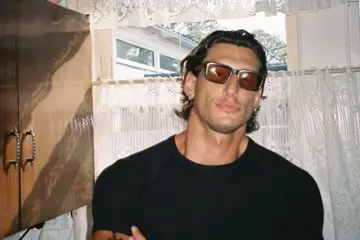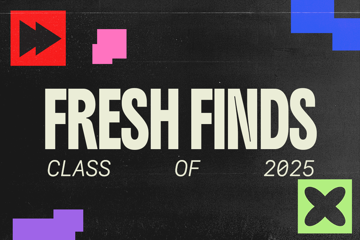A word thrown, desired, feared and overused. A sentiment discovered, innate, one we're blessed by and burdened with; yet inevitably need to survive. A part of life that adapts and evolves to and within each human, and yet can feel so transient and unique to the affected.
Discard the former assessment, and love just is; the fibre of the human experience in how we intuitively connect. Through a multitude of communications and timelines, this connection is built through a series of links; one of which we commonly digest being art in its varying forms. Activating a multi-sensory retort, art accesses and engages with our inner-being to stimulate a response where words fail to explain or articulate the depth of how we so strongly may feel.
Whether through the immersion of sound, the exposure to touch, interaction with tastes and smells or through visual representation, you've felt it before and have allowed it to cause a reaction. Where that reaction differs upon the recipient, the universal response is what makes art expressive; and creatively moulds to the shape we are carved into, based on our own personal histories.
Take this entire study and apply it to a body of work so conscious, at times it is almost as if we're looking from the outside in; that body of work being PREQUEL's debut album Love Or (I Heard You Like Heartbreak).
Don't miss a beat with our FREE daily newsletter
A sonic collection of live instruments, samples and collaborations, the 12-track banquet follows the narrative of love and loss, facilitating a beginning, middle and end. A concept birthed organically, it has been romantically constructed by the ceremony of Prequel's hands and own personal history; that is not only through the sounds explored, but the accompanying artwork idea (and executed by Seth Searle), film clips and mini-clips attached to each song.
What has been a long-time coming with added curveballs thrown in by the pandemic, Prequel finally proudly releases his debut LP Love Or (I Heard You Like Heartbreak) today through prolific South London label Rhythm Section. In coordination with its release, we took a deep dive into the creative genius behind Prequel - Jamie Lorusso-Zyskind.
You’ve absolutely nailed the mood throughout this record. Encompassing all angles of love and loss, it resonates in feeling unique to the human experience, and yet is how we connect with one another. How did you create such an air?!
I didn’t set out to make an album, and I certainly didn’t set out to make an album about love. I didn’t sit at my computer one day and be like, “alright, make an album about love.” It actually came off the back of a pretty long time of writer’s block. I hadn’t made music for ages, for various reasons. One was that I just needed time to breathe in rather than breathe out? I didn’t really have anything “out” to give.
The other reason is that primarily, my power is sampling. I sort of – wrongly so, conjured up in my head, “I don’t have any new records to sample,” and created that as a thing, until I was like “just go through the shit that you got. It doesn’t matter if you’ve sampled that record before, just go through it.” So I started just going through all of my old records.
Most of the records on this album are from stuff that I bought when I was like 15, 16, 17, so I started making a few songs I liked, 'cause I have to like them first, and this sort of narrative showed itself to me. Again, I wasn’t like “sample a song about love,” it just sort of kept coming up.
Once I had one / two / three joints semi-done, I was like, okay, maybe we can go in this direction, that kind of works. I just started going through joints, and making songs with that sort of background in my mind. I didn’t want it to be – and there’s nothing wrong with this — but the “dance album” as a concept is a bit weird, perhaps? There’s a lot of people who will say the album format is dead, or that no one listens to whole albums, people just download individual tracks, especially an album with a narrative. So I wanted to have an album with a narrative, with not only my mood and my style of producing, or the “Prequel sound” I guess, if there is one, but I wanted to have it flow as a story, as a narrative, and I wanted it to flow musically. I wanted it to encompass all of my influences. Even putting on things like the intro and the outro and interludes, it’s a very hip hop kind of thing to do (for me, I associate that with hip hop); you know like Prince Paul doing skits on De La Soul albums. The symmetry of it as well. What I had hoped to create is an album that you can play in some kind of dance floor scenario, but also an album you can chuck on in your headphones and read a book or walk down the street, or walk around the park, or eat a sandwich to; whatever.
I had all of those things in my mind going at once, and keeping focused on the central theme of love and loss, and also like you said before, keeping that relatively... I don’t want to say ambiguous, but maybe universal, which is why I tied that into the album cover; that being a relatively androgynous figure. I didn’t want people to be like, “Ah that album is about a boy and a girl relationship, or a two girl relationship, or two boy relationship, or this relationship, or that religious relationship…” I wanted people to be like, “Ah that resonates with me." In my mind, my experience of love and loss and heartbreak and break-up and get back together and all that kind of stuff, I tried to juggle all of that in my mind, and this is what came out [laughs].
I guess dispersing that amongst the tracks, there are some so different to the next. You say it follows a narrative, but you can still isolate one of the twelve tracks so that it can be played on a dancefloor. I feel like you’ve done so well at creating a flow throughout the album, and yet they can also be played individually.
Thank you, that’s also what I’ve gone for as well. At the end of the day, it is going to be digested in the dance world as individual tracks. This song I’ll play at this club, and this song will play at that festival - hopefully, if people play it. I wanted each track, like you said, to work on its own, but also it flows with the whole thing. The storyline of the relationship with the track titles obviously, but also the musical progression.
I do a big thing when I release stuff or work on other people’s projects where I physically print out all the track titles, put them down and go, okay. That’s the track title, I know that. That’s the outro, I know that. Then I had these two interludes 'cause I knew it was going to be a double album, so I wanted you to flip it and start the second part of the story. Then I was like, okay, musically that song may make sense after this song, but thematically, narratively, that didn’t happen before this in the story. So that was kind of a tricky thing to juggle as well.
Like I said, hopefully there’s a song that can be played out at the club, or a bar or a restaurant, and hopefully there’s a song people can play walking the dog or picking up their kid, or having a shower.
[video width="1280" height="720" m4v="https://images1.purplesneakers.com.au/2021/03/607a08c8ade5cb0ddae827f8c6d6cedf.m4v"][/video]
It’s refreshing to hear such a concept record carry a theme and yet break that into sub-themes. There’s optimism, hope, excitement and yet turbulence, sadness and uncertainty that all stems back to love and romance. Once you realised it was conceptually about love, how did you navigate the structure? Was it then a conscious thought to break up what love is, rather than being that one sad feeling, or in that one moment of lust?
This is a stupid answer, but I think it was as much conscious as it was sub-conscious. I knew what I wanted to do and where I wanted it to go, but I wasn’t like, “Okay now I HAVE to make a song about when this happened in the story for track nine for that to link with that.” It sort of flowed. There was a song on the album that I actually took off, and released elsewhere; because it was about love and it was this and that, but it actually didn’t fit in. I wanted to have the whole structure of a tumultuous start of a relationship where there’s still love in there but there’s contrast. There’s beautiful things in there but there’s trouble, there’s this, that. I got inspiration from certain relationships that I’ve been in – one more of a main focus, and other ones that impacted it, and obviously a bit of artistic embellishment.
I wanted to present it as well as I know – and I’m not some kind of love guru or anything [laughs] but as well as I know about a certain experience and I wanted to expand on that especially with the first single, which was with Cazeaux O.S.L.O, and the way he spoke about love. I wanted to expand it further with the video clip for that; which is made up of like 65 different films. That clip shows all different kinds of love. There’s clips of Dustin Hoffman and his kid in Kramer Vs Kramer which is the love between a parent and a child. There’s Uma Thurman and her daughter in Kill Bill 2. There’s the two French actresses whose names I won’t try and pronounce in Blue Is The Warmest Colour. It’s not just a straight two-people relationship, it can be love of anything. There’s death in there, too. Again, it ties in with the album artwork of an ambiguous figure.
In fear of sounding like a pretentious prick, there’s also an element of timeline and reflection, because often, and I don’t know if you’ve had this in your own life, but often you think a relationship is one thing, but perhaps on the other end of it you think, “Oh no shit, when [that person] said [that], I thought it was [this] but it was really [that]. When I acted [this] way, I thought I was speaking for [this] but [this person] took it as [that].” So with the album cover as well, where you’ve got the figure holding up the see-through glass plate: first of all only half their face can be seen through that glass plate, and second of all, you can decide whether you’re looking into the album, or whether you’re that figure on the album looking out. What part of the relationship is distorted? What part of you is distorted? What part of them is distorted? What part have you looked at differently, and also why and when have you done that? Are you looking at it differently from the start? Are you changing your perception during the relationship? Have you changed your judgement after the relationship?
I wanted to play with that whole time thing as well. Obviously that’s a bit more of an esoteric type of thing, and doesn’t necessarily translate musically, but as a concept type of thing – and I know this all sounds really fucking pretentious [laughs], I just wanted to play with the timeline of it and how you view things as well. A relationship is what it is at the time it exists, and for argument's sake, the two people involved are the only real ones that know what happened, but when you grow and you mature and you recognise things, the things that happened still happened, but you may look at it in a different light.
There’s a saying that my late mother used to always say to me, and we used to argue about this, but it’s resonated while I was making this which was, “Don’t tell me that you love me, show me that you love me.” So that kind of played into it as well, as an over-arching way to look at it.
It becomes multi-sensory with the artwork, and with the film clips, and even each track having its own mini-clip. You realise it is a time sequence, because there is a start to your album until it becomes the end, with things that happen throughout. As I said before, people will listen and react like, “Oh yeah that’s how I felt in my relationship.” I even felt the same in that it doesn’t have to be between two peoples’ romance, it can be the love of life itself, or an object, a possession…
Cool, yeah! Mother-daughter relationship, father-son. My best friend, or your sister, or your dog. I hope other people think that way! [Laughs].
There are so many layers and intricacies within a Prequel song. ‘When Love Is New’ escalates as layers build, and resonates by gifting the listener that butterfly feeling in the pit of their stomach. What is your process of arrangement, and how do you know which sounds and instruments will fit comfortably in such sentiments? The strings in that song for example, that is romantic in the way that they’re used. How do you know how to do that?
Well, I don’t [laughs]. I’m fucking winging it on my computer which I barely know what I’m doing [laughs]. I’m not a trained musician, I don’t know if shit’s in key; I’m like, “Yeah, it needs another four bars, I hope!” In terms of ‘When Love Is New’, it’s funny that you say that, because not to say that your take on it is wrong, it’s just different to how I initially set it out. It is the start of a relationship in the narrative of the album, but for the-start-of-a-relationship-song, it’s also a little bit melancholy. Like yeah, it’s new and exciting but its also pitched down a bit, and it’s a little bit sombre in maybe its not the great start that you thought it was going to be? In terms of the arrangement and other elements, the sample and the vocal is from one place, and it had a little string sample in there as well.
Originally when I turned in the album to Bradley Zero (Rhythm Section), we were about to start the whole process, and I was like “You know what man? Give me a little more time, I’m gonna put some live shit on here.” Not because I felt that I had to, and not because I really wanted to work with these people — I DID really want to work with them — but I wasn’t just going to slot them in for shits and giggles, but that particular song had this string sample in it. It sounded good, but it didn’t sound full enough, so when I was hanging out with Tamil [Rogeon], I was like, “Can you do some stuff on this?” Tamil was the one who played the strings on it, who just released a fucking incredible jazz album called Son Of Nyx, it’s really, really good.
So yeah, we went to Tamil’s place, talking shit and he just laid some strings down and was like, “I can play lower, and I can do [this], triple [that], double [that]”. So when he gave me all the files, I went home and I had a whole stack of files of all his string tags being like, there is so much to work with here. I didn’t want to introduce it all at once, so you only get to hear all of the strings in the last section. I think there’s like eight or ten tracks at the end, so I went to build that up and have this whole – I hate to use the word, but like “cinematic” kind of thing.
For me, personally, the two most emotive instruments that I’ve used in my productions are saxophone and strings. Like live, or sampled or whatever. You know when you hear strings in something, especially in maybe dance music; like there’s some pretty anthemic dance music songs with string samples, like Pepe Bradock’s ‘Deep Burnt’. You hear that, and you’re like “Oooooh! What’s going on! I’m in my feels right now but I’m dancing!”
You may listen to this album and change your perception where a song may mean something to you differently from when you listened to it originally – if you listen to it again [laughs].
I’ve noticed with your lyrical content, you tend to use the spoken word, more than singing vocals. I know a lot of that is sampled as well, but say in ‘Love Is’ from the record as well as your older track ‘Saints’, it feels like we’re presented with a monologue; which is quite powerful. What is it about the spoken word that you prefer?
Well for both ‘Saints’ and ‘Love Is’, it’s Cazeaux O.S.L.O (Dom Wagner) who’s become a musical friend of mine. I’ve got to give him most of the credit because while we collaborated on the lyrics, he listed all the people in the first verse on ‘Saints’ and we kind of wrote the list for the second verse together. He came up with the chorus, the whole “Black is” thing – obviously I’m not black, so I’m not speaking to that directly, that was him that came up with that altogether.
For ‘Love Is’, I played him the song, and I asked if he’d written anything the day we recorded it. He was like “Nah nah, what’s the vibe, what’s your vibe?” I was like, “Man, honestly maybe just have a look at the names, at the titles on the album, and go off that.” He ended up reading them in more or less sequential order, and then adding all the ‘Love Is’ chorus stuff in a similar way to ‘Saints’. He did it in one take, and it was just like – holy shit. He was like, “Should we do another take?” My friend Amin Payne was recording and were like, “Nah man, I don’t think we need to,” [laughs] “that was fucking perfect”.
In terms of wanting to have spoken word in my stuff, I mean first of all my voice on a record is not going to happen. The whole hip-house genre, I don’t know if its got a lot of cred, so I didn’t really want to go down that route. I had another sample on there and it was a bit too obvious, and a bit too big. Kind of even a bit too general, and Bradley [Zero] was like, “That’s not gonna fly” which was fair enough, so I knew who I needed to call.
I hit Dom up, went back and forth for a bit and then we came back to Melbourne and recorded it. I guess the spoken word thing, which has been a tradition in house music before, it just resonates because tone-wise, Dom just has an amazing voice. You don’t need to do a lot to his voice on a computer; just a little bit of compression, and maybe a little bit of echo and delay, but that’s it. I’m not there for seven hours, his voice cuts through everything tone-wise. In terms of his voice as an artist, he has an ability, in my point of view, to engage you, and to educate you without lecturing you. I think that’s important, especially if you’re dancing to a song in 4/4.
There are a lot of those songs that are talking about house music or certain artists, you know, I’m not the first one to do this by any stretch of imagination, but some of those songs sometimes can feel like a bit of a lecture or something, which I don’t know if many people want to hear that on a dancefloor; depending on time and place. There’s been other examples of this, like Daft Punk did that ‘Teachers’ song, and artists from Detroit have been doing it for years.
The spoken word thing with Dom, he just has that ability to educate and to talk at you without being like “sit down and listen to this lecture”. A perfect example was when we were recording ‘Saints’, when we recorded the first verse. I was like, “Dom, can I ask you something? Who is this? And who is that? And who’s this?” and he goes, “That’s the point.” I was like “Ahhh, okay. Click. I get it now.”
You might hear ‘Love Is’ on the dancefloor, after a couple of drinks just dancing to the beat, but maybe if you listen to that song in your earphones on the way to catch the bus, something else might resonate with you. It’s that fine balance of entertainment, so to speak, and education at the same time.
Your sampled pieces have a real driving force through the use of repetition, rather than being too word heavy. Would you say its almost a “less-is-more” approach?
Yeah absolutely. I’m from the hip hop school of production, and when I say “school” I mean [the] "I taught myself" school [laughs]. To me, it’s what serves the beat. When I hear my songs, I think, okay, this doesn’t need anything else more than its got, but I might hear something and go, okay this would be great with ten stacks of strings on it. It’s a very hip-hop based thing where obviously a lot of hip hop songs have a lot of layers and sounds and samples from several different sources, and obviously that exists in dance and house music as well. Even early Neptunes stuff is like stupid minimal; suuuuper super minimal.
It’s all about the feeling; if I add something, am I retaining the feeling? Or am I taking away from the feeling? If I’m taking away, then I don’t need that extra tambourine or hi hat. The kickdrum doesn’t need four kickdrums, it just needs to be a subtle Moodymann kind of thing, you know? None of my songs are like these big dancefloor bangers – but then I look at someone like Moodymann who is in my top three musical heroes, so to speak, and some of his stuff just has this real subtle, soft-rounded kickdrum in it. It doesn’t have this huge, seven-layered kickdrum to smash in the club. I think it’s got to serve the song.
There’s a lot of self-control involved then.
Yeah, it’s very much a process of throwing shit at a wall and seeing what sticks as well, but I’m not just going to keep throwing it. It’s like a painter, like, “Oh why didn’t you use every colour of the rainbow in your picture?” “Well I didn’t need to use them. In this I wanted blue and green, and a little bit of black.” There’s a thousand examples; “Why didn’t you use all the actors in this scene?” “Well I didn’t want to use all the actors, I just needed the two actors”.
I approach it in a way where it has to serve the song, and also it has to serve the narrative of the album when I was making this, and it has to serve the sound overall, of the album. I didn’t want to put too many curveballs in there, because it wouldn’t fit the structure of the album.
The outro on LOVE Or (I Heard You Like Heartbreak) ends so abruptly. Was there a reason for that?
Yes – there are several reasons for that. The first reason is I happened to just hit the space bar when I was recording that, and that’s where I cut it off. Then I went, ah fuck, I should go back and sample the end, so I went back and sampled a little bit further down the line and then was like, yeeeah? Doesn’t really work. Then I was thinking about it, and I was like a) narratively, relationships sometimes just end. They don’t have a fairy tale ending, or a lovely ending, or a civil ending, or an ending with closure, so that fit narratively with what I was trying to do.
The second thing is that I thought of a lot of influences in cutting things off like that; the first one being The Sopranos – spoiler alert – the very last episode of the very last season ends very abruptly like that as well. Third of all, ‘Untitled (How Does It Feel)’ by D’Angelo also ends like that. I thought, that’s pretty nice company to try and force my way into [laughs], I’ll keep it there.
The film clips and accompanying clips are hugely impressive edits. I noticed they all stem from older films, why the use of classics?
Well, originally I had this idea for the ‘Love Is’ film clip that I was literally about to click ‘go’ on, and then the pandemic hit so I couldn’t film it. When we were meant to be releasing the album last year, I spoke to Bradley and the team at Rhythm Section about it, and was like obviously I just can’t do this that way anymore.
I’d made those small little promo clips that I’ve been releasing because I love film and like tying it in, and I can’t remember exactly who said it, but it was discussed in the team meeting, of like “Why don’t you do a film clip, made up of other film clips?” and my head exploded. I was like, “I can’t believe I’ve never thought of that before! That’s perfect for me because its sampling, but it’s visual and I love films and try to learn more about them.”
So the first one of that, I got most of it done in about three nights? Late nights, coupla gin and tonics, a lot of post-it notes and a lot of writing and scripting and print-outs of all the lyrics and scribbling lines, like, “What film does that remind me of” etc. I sent it to Bradley, he suggested some very good changes. It was really challenging to make, there’s a hundred films I could have put in there that I didn’t; because I couldn’t fit every single film that I love in there because the edit is a three-and-a-half-minute song. I also didn’t want to go too obscure and be film snobby, but I didn’t want to go super duper obvious, so hopefully I’ve struck some kind of middle ground. I know most of the films in there are like relatively well-known, not some rare 1920s whatever. I wanted people to see it and go “Ah I know this film”. I loved putting them together – it was really challenging, and really fun, and I had to teach myself Final Cut Pro again, so the whole process of those three or four days had a lot going on.
For the second clip, which was a recutting of La Dolce Vita by [Frederico] Fellini – that was a different story because I’d only actually seen that film once, during the pandemic. I watched a lottttt of films last year. I thought, “This fits the next single, perfectly.” When you’re cutting from only one original source as opposed to having every film that you want to put in at your dispense, but having that need to be guided by the lyrics, it’s a very similar process but it’s also very different. I’m also fully aware that I’m recutting one of the greatest films of all time, and I’m sure if anyone cares, they’re going to get a little bit upset with me. I’ve chopped up a Fellini film, I’m fully expecting some kind of Twitter-backlash.
The third clip, I chopped up another really beautiful film that I watched last year called Brooklyn which is with Saoirse Ronan. When I watched it, I thought it was great, and again it was just one source, so I had to work with what was there; I couldn’t bring in other things. Without spoiling it, there’s a death in the film, and so I wanted to change whose death that was, so I had to chop my way around that and structure it so that it was the other person in a relationship that dies in the clip. I loved doing them, but they’ll probably get taken down by YouTube. It is what it is.
Even the lettering to open each visual reminds me of a film opening credit roll. Was that the intention?
It’s literally taken from The Irishmen, which is a film that I quoted in the title of my album. The Irishmen is a film by Martin Scorsese, but the original title of the film and what the book is called and is based on is called I Heard You Paint Houses; so I wanted to change that to (I Heard You Like Heartbreak). The bracket thing is from Birdman. There’s a lot of visual cues from The Irishmen. The first song has a clip from the film, where Joe Pesci’s character closes the door on his wife in a car, then the titles appear as they do in the film. Instead of saying “I Heard You Paint Houses”, it says, “I Heard You Like Heartbreak”. Then there’s a shot of two painted lines on a road that are together, and then slowly drift apart. At the end of that clip, I played it in reverse, so that the two lines come back together.
There’s little things that I don’t know if anyone will pick up on, but I certainly wanted to put in all three of the video clips. My name “Prequel” pops up, there’s a very slight cut where it appears again - I don’t know if you noticed that, or if anyone will notice that, but that’s another homage to arguably the most emotional scene in The Irishmen, where Robert De Niro’s character is talking on the phone to Jimmy Hoffa’s wife, and it’s the only jump-cut in the film that occurs in that specific scene which is really weird to have a jump-cut in a really emotional, one-shot monologue, essentially. It’s just this little flicker jump-cut, so I wanted to put that at the start of all my clips. I know this is really fucking meta and ridiculous, but having a jump-cut like that in a scene that is really emotional, it sort of lends itself to the emotional journey or scenario of the narrative of the album; and perhaps being something slightly out-of-place, in a way unexpected, or doing a double-take in reality. I don’t know if you’ve ever fought with a partner before, but you get a hit of reality, and you’re like, “What the fuck, are we fighting about this thing? Did you really just say that?” It all links together, I hope [laughs]. If anyone else notices that, that’s my intention.
It’s cool, so much thought has gone into every piece of media in this album.
I’m very good at overthinking things, so I’ve applied that directly to this whole album, very forcibly over everything [laughs]. To the orange square at the top of the album cover being homage to the Madvillainy album, to the jump-cuts at the start: every little thing has an explanation. I haven’t made a film before, but the films that I have studied and have read a lot about, I really wanted to make everything really, really intentional. Not to say that I haven’t in the past, but I think you only get one shot to make your first album. Subsequent albums, whatever, you can correct your mistakes of the past, but your first one is your first one. Everything is really deliberate, from the abrupt ending, to the kickdrum in ‘Love Is’ sounding like the heart; it’s not a straight 4/4, it’s got a bit of a heartbeat rhythm. The sample sources, phrases that have been turned around to the fact that if you find the original samples for songs, they expand a whole notion of what the song could be about, in a similar way that [J] Dilla did with Donuts – not that I’m on his level at all, but in a similar vein.
I’ve really — as much as I could possibly muster — really thought about every little thing on this album. Even my very temperamental OCD, the vinyl has the intro and two songs, then the flip is two songs and an interlude. Side C is an interlude and two songs, and Side D is two songs and an outro, so it’s all symmetrical. Even all that stuff, that’s also why I took that other song out, I was like “If I put this song here it’s going to mess up the whole symmetry.” I’m a very clean, organised person, I need to have my album the same way! It needs to be all neat and structured and nice.
There’s two quotes on the back of the vinyl that are from different sources as well. One is Jude Law’s character in The Young Pope, there’s a quote from him about love. The second quote is from an old Jewish Rabbi that I heard when I was in synagogue like two years ago, and it really struck me, really hard. I’m Jewish, but I’m not super religious, but when I heard that I was like, "Wow, okay". The quote is, “There’s nothing more whole than a broken heart”. Hopefully my Jewish brothers and sisters don’t sue me for jacking a quote [laughs].

You’re releasing Love Or (I Heard You Like Heartbreak) through prestigious South London label Rhythm Section. Having released with them in the past, tell us how your relationship formed and has flourished up until this point.
I wouldn’t say I made this album for Rhythm Section, but when I was making it, I did think this would suit Rhythm Section. The last thing I released with them was in 2016, so that’s quite a few years ago already. Through knowing Brad[ley Zero], who I’m lucky enough to call a friend now, I had told him about it. He was like “Oh the Prequel album, yeah yeah.” I was like, “Nah it’s coming, it’s coming.” When I was in London two years ago, I ended up playing him a couple of tracks from it, and I got the nod, like the “Okay, alright.” That’s pretty much what Brad gives me when he likes it, if he doesn’t, he’ll be like, “Nah, it’s not for us.”
I sent it to him, and he liked it I guess! I mean, look, Brad gets a lot of music, and Brad, in my opinion has got very good taste in music, so if he didn’t like it, he’d definitely tell me, or just say if it wasn’t suitable to Rhythm Section; which he has said to me in the past. I’ve had projects I’ve pitched him where he’s been like, “Dude, it’s really good it’s just not the Rhythm Section vibe” which is like, fair enough.
For me, it feels really special to release on them my debut album. I’ve worked with Brad and the team before; Mali and Amelia, Emily and when Morell used to work with them and when Anu used to work with them, he’s always surrounded himself with good people, so it’s really great to be releasing on Rhythm Section. It’s like my home away from home, Brad’s my homie. It’s exciting to be on that roster with all of those awesome artists; which a lot of I’m lucky to be able to call mates, as well, and have toured with and kicked it with. I’m pretty excited that they’re releasing it. It’s the perfect home for the sound and the type of music, and I guess Brad agreed as well because he’s releasing it [laughs], so that’s good!
Prequel's debut LP Love Or (I Heard You Like Heartbreak) is available today - Friday, 19th March through Rhythm Section. Grab your copy either digitally or physically HERE.
Words by Hannah Galvin.
Photo credit: Natalie Jurrjens
SEE ALSO:
DRESSING TO THE NINES WITH PREQUEL'S 'I TRIED TO TELL HIM' FOR RHYTHM SECTION'S SHOUTS COMPILATION
BACARDI'S FUEGO REVOLUTIONS: PREQUEL OFFERS UP HIS FAVOURITE LAID BACK TUNES
30/70 RELEASE 'FLUID MOTION' REMIXES FEATURING CLOSE COUNTERS, SETWUN AND MORE


